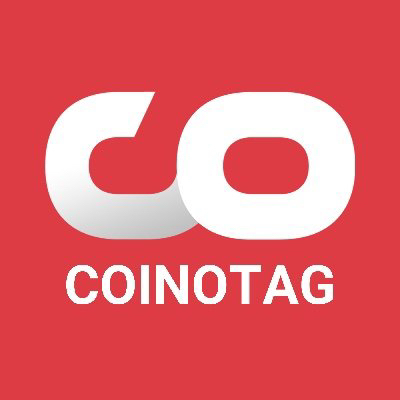FLOWからJPYへの交換
Flowの市場情報
現在のFlow価格(JPY)
Flowの価格は今日上がると思いますか、下がると思いますか?
今日のFlowの価格の他にも以下を検索できます。
Flow(FLOW)の購入方法Flow(FLOW)の売却方法Flow(FLOW)とはFlow(FLOW)を購入していたらどうなっていたでしょうか?今年、2030年、2050年のFlow(FLOW)の価格予測は?Flow(FLOW)の過去の価格データはどこでダウンロードできますか?本日の類似の暗号資産の価格は?暗号資産をすぐに入手したいですか?
クレジットカードで暗号資産を直接購入しよう。現物プラットフォームでさまざまな暗号資産を取引してアービトラージを行おう。Flowの価格予測
FLOWの買い時はいつですか? 今は買うべきですか?それとも売るべきですか?
2026年のFLOWの価格はどうなる?
+5%の年間成長率に基づくと、Flow(FLOW)の価格は2026年には¥29.39に達すると予想されます。今年の予想価格に基づくと、Flowを投資して保有した場合の累積投資収益率は、2026年末には+5%に達すると予想されます。詳細については、2025年、2026年、2030〜2050年のFlow価格予測をご覧ください。2030年のFLOWの価格はどうなる?
Flow (FLOW)について
Flowとは?
Flowは、様々なアプリケーション、ゲーム、デジタル資産に対応するために作られたレイヤー1のブロックチェーンです。ブロックチェーンゲームCryptoKittiesの開発者であるDapper Labsによって設立されたFlowは、当初、CryptoKittiesの成功後にEthereumのネットワークが直面した混雑問題に対応するために開発されました。このためDapper Labsは、同社の希望する機能に合わせてカスタマイズしたブロックチェーンFlowを開発しました。
Flowはゲームや消費者向けアプリケーションに最適化されており、数百万人のアクティブユーザーのトランザクションを処理できる可能性があります。このブロックチェーンは、非代替性トークン(NFT)など、新たなブロックチェーンのユースケースに対応するように設計されています。Flowは、NFTの人気商品であるNBA Top Shotのようなブロックチェーン・アプリケーションを成功させており、数十億ドル相当のNBA Top Shot取引を数百万件処理しています。
関連資料
ホワイトペーパー:https://flow.com/technical-paper
公式ウェブサイト:https://flow.com/
Flowの仕組み
Flowは独自のマルチロールアーキテクチャを採用しており、他のブロックチェーンがスケーラビリティのために採用しているシャーディングに頼ることなくスケーリングを可能にしています。Flowのアーキテクチャでは、従来は単一のバリデーターが行っていたタスクが、コンセンサスノード、実行ノード、検証ノード、コレクションノードという4つの異なるタイプのノードに分散されます。各タイプのノードは特化したタスクを実行し、4つのノードタイプすべてが各トランザクションの検証に貢献します。
コンセンサス・ノードは、Flowブロックチェーンにおける取引の存在と順序を確立します。実行ノードは、Flowトランザクションの確定と検証に必要な計算を実行します。検証ノードは、実行ノードの動作を監督し、確認します。コレクションノードは、Flowブロックチェーン全体のネットワーク接続性とデータへのアクセス性を強化します。ノード間のこのような分業は、各トランザクションの様々な検証フェーズに及び、高い効率性とスケーラビリティを保証します。
FLOWトークンとは?
FLOWはFlowブロックチェーンのネイティブ暗号資産であり、Flowエコシステム内の交換媒体として、またバリデーターとしてネットワークに参加するための前提条件として機能します。Flowブロックチェーンは、プルーフ・オブ・ステーク・コンセンサス・メカニズムを改良したものを採用しています。バリデーターがネットワークに参加するには、指定された数のFLOWトークンをステークしなければなりません。
FLOWは、取引手数料の支払い、ネットワーク・ガバナンスへの参加、ステーキングによる報酬の獲得に使用されます。開発者はまた、Flowブロックチェーン上でスマートコントラクトを展開・管理するためにFLOWを使用します。
Flowの金融への影響
Flowの金融セクターへの影響力は、NFTやブロックチェーンベースのゲームのサポートを通じて明らかです。NFTは、アーティスト、クリエイター、ブランドにデジタル資産を収益化する革新的な方法を提供し、デジタル経済の重要な要素となっています。大量のトランザクションを処理できるFlowの能力は、ユーザーフレンドリーなオンボーディングを重視することと相まって、NFTマーケットプレイスやその他の分散型アプリケーションにとって魅力的なプラットフォームとなっています。
Flowのマルチノード構造とリソース指向のプログラミングは、分散型金融(DeFi)アプリケーションの開発に理想的なプラットフォームとなっています。Flowは高速でコスト効率の高い取引を促進することで、分散型取引所、融資プラットフォーム、ステーブルコインなど、さまざまな金融アプリケーションをサポートすることができます。数百万人のアクティブユーザーのトランザクションを処理できるFlowは、急成長するDeFi業界において強力な競争相手となります。
Flowの価格を決めるもの
ダイナミックな暗号資産の世界では、Flowの価格が投資家や愛好家の間で強い関心を集めています。Flow(FLOW)の価格予想は、そのブロックチェーン技術と市場力学に内在する無数の要因に影響されます。専門家はしばしばFlowブロックチェーン価格分析を深く掘り下げ、様々なFlow価格予測に基づいて潜在的な軌道を測定します。Flowの暗号資産価格の歴史を分析することは、その回復力と市場における潜在的な成長の証となります。さらに、Flowトークンのマーケットキャップは、暗号資産市場における地位の重要な指標であり、しばしばFLOW USD価格の動向を左右します。
投資家がFlowのライブ価格を熱心に観察する際、Flowトークンの現在価格は、市場の需要、技術の進歩、暗号資産セクターの広範なセンチメントを含む様々な要因によって決定されることに注意する必要があります。今日のFlowトークン価格は、最新のFlowニュースにも大きく影響され、大幅な変動をもたらす可能性があります。投資を考えている人には、Bitget取引所のようなプラットフォームが、Flowを購入するためのシームレスな体験を提供しています。さらに、潜在的な投資家は、投資を確保し、Flow(FLOW)のROIを最適化するために、常に最高のFlow(FLOW)ウォレットを探しています。
2023年末を前にして、Flowトークン価格予測2023とFlowトークン価格予測2024の両方が、様々なフォーラムや投資界で話題となっています。アナリストも愛好家も同様に、Flowの将来を示唆するかもしれないパターンと傾向を解読するために、FLOWトークンの価格チャートを熱心に分析しています。市場が進化するにつれ、投資家は情報に基づいた意思決定を行うために、Flow(FLOW)の価格予測2023に注視することが賢明です。
結論として、Flowの価格は、市場力学、技術進歩、投資家心理の複雑な相互作用に影響されます。コミュニティが期待に胸を膨らませて待つ中、Flow通貨のマーケットキャップと今日のFLOW通貨価格の動向は、将来の軌道を示す重要な指標となるでしょう。Flowの購入を検討されている方も、Flowの将来を注意深く観察されている方も、最新の動向と分析に遅れないことが、活気に満ちた進化し続ける暗号資産市場をナビゲートする鍵です。
Bitgetインサイト




FLOWからJPYへの交換
FLOWの各種資料
タグ:
Flow(FLOW)のような暗号資産でできることは?
簡単入金&即時出金買って増やし、売って利益を得ようアービトラージのための現物取引ハイリスク・ハイリターンの先物取引安定した金利で受動的収入を得ようWeb3ウォレットで資産を送金しようFlowとは?Flowの仕組みは?
Flowのグローバル価格
もっと購入する
よくあるご質問
Flow(FLOW)への投資の有望性
FLOW 価格の決定要因
FLOW コインの仕組み
FLOW の Ethereum との比較における優位性
Ethereum と比べた FLOW におけるNFT開発での適性
FLOW の実績
Bitget取引所でのFlow (FLOW)の現在の価格はいくらですか?
現在、Flow (FLOW) の価格に影響を与えている要因は何ですか?
フロー(FLOW)は今後数ヶ月で価格が上昇すると予想されていますか?
Flowの価格パフォーマンスは、他の暗号通貨と比較してどうですか?
今年の年末に向けたFlow (FLOW)の価格予測は何ですか?
フロー(FLOW)は最近、過去最高価格に達しましたか?
Flowの価格トレンドについてテクニカル指標は何を言っていますか?
Bitget取引所でFlow(FLOW)を購入するにはどうすればよいですか?
Flowの価格に影響を与える可能性のある今後のイベントはありますか?
Flow(FLOW)に投資する前に知っておくべきことは何ですか?
Flowの現在の価格はいくらですか?
Flowの24時間取引量は?
Flowの過去最高値はいくらですか?
BitgetでFlowを購入できますか?
Flowに投資して安定した収入を得ることはできますか?
Flowを最も安く購入できるのはどこですか?
今日の暗号資産価格
Bitgetに新規上場された通貨の価格
注目のキャンペーン
Flow(FLOW)はどこで買えますか?
動画セクション - 素早く認証を終えて、素早く取引へ










